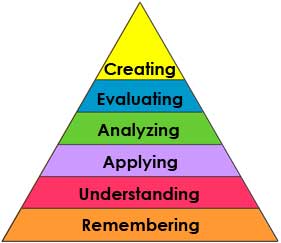Learning Objectives and Assessments - The State of Maryland Department of Education website presents curriculum guidelines and "... begins with content standards or broad, measurable statements about what students should know and be able to do." (mdk12.org, 2014). The objectives below are based on these standards. The concept of area and perimeter was considered as the learning issue, since this is a core standard which is introduced in third grade, and considered again in fourth grade. By sixth grade the general udnerstanding and calculation of area and perimeter, is something a student "...should know and do." (mdk12.org, 2014).
Objectives for Learning - In working with this diverse group of students, it seemed all of the three pathologies of learning, amnesia, fantasia and inertia were present (Shulman, 1999). The objectives below attempt to take these into account. Some students demonstrate amnesia, which seems to be the case for some students who perform above grade level, they merely forgot the concept. Once reminded, there was no confusion as to how to solve area and perimeter problems; those these students forgot initially, they could take things a step further and solve for missing lengths without being giving explicit instructions. The majority of the students demonstrated fantasia, thinking they understood the concept but had a variety of misconceptions. These students would not ask questions about how to do the problem, and thought they knew how, but many of them reversed the equations for area and perimeter. With limited visuals for demonstration, intertia may be the reason for not retaining what they have previously learned. The students may not have a way to connect area and perimeter to a concepts they understand. The mere description and drawing on the board may not make the idea of area and perimeter stick, since it does not relate to previous knowledge (Shulman, 1999).
Part of the learning issue could be the students remain in merely remembering and understanding only, where they were just obtaining information regarding area and perimeter to perform well on a test. The newer version of Blooms Taxonomy as described by Overbaugh and Schultz, and depicted below, takes the students beyond remember and understanding (Overbaugh & Schultz, 2014).The assessments will verify the students apply what they see in an applet, and then analyze how area and perimeter differ. The next objective allows the students to apply and analyze also, but demonstrating their knowledge of area and perimeter in the context of the coordinate system. Both of the first two objective demonstrate to students how there are often misconceptions about area and perimeter, and students can evaluate whether or not these misconceptions apply to them. Finally, the student can use what they have learned to create a demonstration for other students, taking into account all of the previous levels worked through.

Assessments - The assessments will likewise include a variety of demonstrations of what the students have learned from the variety of resources employed to demonstrate the objectives. The rubrics will be detailed, and qualitative as well quantitative indicating specific components which comprise each different level within the rubric. Blooms verbs from the higher levels will be included throughout.
In the culminating project, the students themselves will create 5 multiple choice questions which will be added to the video. Throughout this process, formative assessments will be made to make sure the copy for the demonstration is accurate, and the questions demonstrate an understanding of the concept.